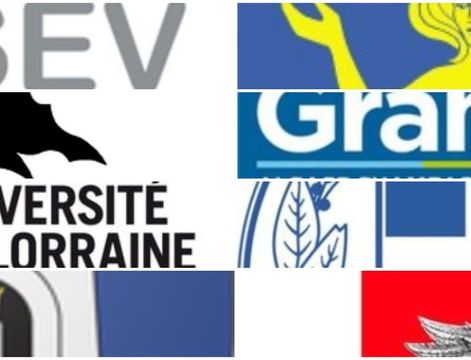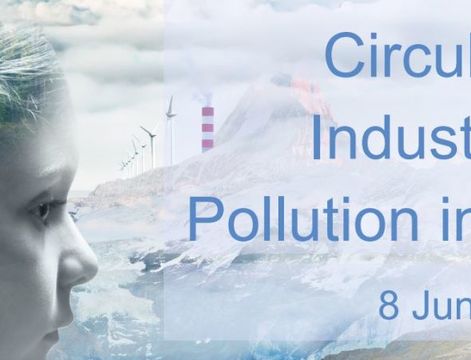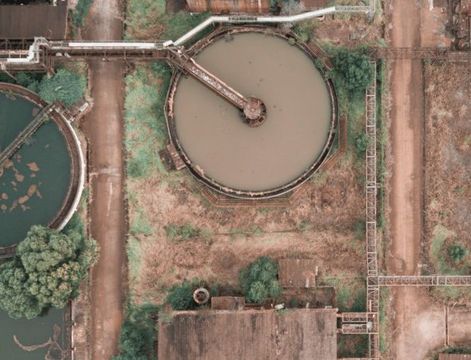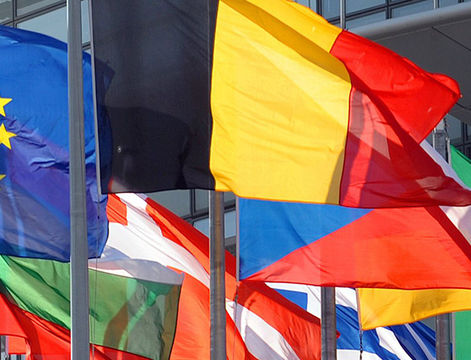
TANIA's additional year result
Summing up the activity carried out during the additional year.
There are an estimated c.2.5 million potentially contaminated sites across Europe, of which at least 14% require remediation. Managing contaminated land costs around €6.5 billion per year. 42% of this comes from public budgets.
Partners from 5 regions have identified the potential of connecting new and future materials and clean technology to natural heritage protection, in order to address these environmental and economic problems. Through TANIA, they support wide and effective application of nanoremediation for contaminated soil and water.
Nanoremediation is a low-cost, safe and effective technique to clean up pollution, improve current treatments and prevent future contamination. Effective uptake is limited by issues concerning technological novelty (need for further R&I, lack of standardised methodologies, patenting and pilot applications, understanding) and the governance model (engaging various policy departments and multi-disciplinary stakeholders).
TANIA uses interregional exchange and participation of stakeholders from environmental and innovation fields to address these limitations. Regions are relative newcomers to the concept of nanoremediation. They compare different experiences on techniques to treat contamination, innovation in environmental protection and governance. They improve ERDF policy instruments, thanks to Action Plans defining measures to support more and better funding for nanoremediation, coordinate governance models and evaluation criteria and insert integration between innovation and environmental protection in their strategic focus.
TANIA aims to
€1,706,549.00
Environment and resource efficiency
The results that each region has achieved from the implementation of its Action Plan was summarized in a video that was presented during the TANIA High-Level Event - Cooperating for Environmental Remediation, held the last 06 October 2021.
Our stakeholders have their say
We collected video interviews from our regional stakeholders and we created two videos. In the first video, the interviewees tell us why they have decided to actively participate in the project, while in the second one, our stakeholders explain what future benefits they see once the project is finished.
Policy instrument objectives are to preserve and protect the environment and promote efficient use of resources (Axis 5) and strengthen RTD and Innovation (Axis 1).
TANIA combines measures addressed to protect the environment with actions supporting development of new solutions and collaborations. The Policy instrument encompasses these objectives in separate priorities:
- 6C: Conserving, protecting, promoting and developing the natural and cultural heritage
- 1B: Promote innovation and R&D synergies between enterprises, R&D centres targeted to development of products and technologies, TT, social and eco-innovation, networking and clusters. It particular refers to KETs.
The Tuscan RIS3 aims to merge technological priority axes (1 focused on nanotechnologies and new materials) and business interests with societal challenges. Nanoremediation represents a priority roadmaps included in the RIS3.
While the ROP and RIS3 include the necessary foundation for nanoremediation, improvements are required to ensure that policy measures are capable of designing and implementing innovative nanoremediation treatments. Sector divisions in regional policy making mean that the ROP axis are not run in a coordinated, cross-disciplinary approach. This hinders identifying, developing and supporting use of eco-compatible / eco-sustainable technologies for contamination treatment. Policy improvement is required to direct innovative solutions arising from R&I towards environment protection.
The priority of interest focuses on research, competence and innovation clusters. The measure should improve quality of the environment and sustainable use of natural resources, through R&I that develops exportable, emission-reducing solutions in cooperation with businesses.
The target is to improve the ability to cope with change through R&I. Measures focus on environmentally and material-efficient technologies as well as bio and nanotechnologies. Funding is allocated to experimental work, demonstration and piloting and to introduction and commercialisation of products and services developed in these phases.
Results should include innovations, innovation clusters and R&D investments; sustainable urban development, new practices and tools for innovation platforms; new green and creative economy business. R&I should develop and commercialise exportable, emission-reducing solutions and seek answers to environmental questions.
The OP is built to serve the whole country. Environmental affairs are included horizontally. It should focus more on the regional interest of Päijät-Häme on environmental affairs and related innovation. R&D&I infrastructure with regional businesses using piloting, testing and demonstration environments should be promoted and supported. Policy instrument does not include possible support for nano/ innovative remediation. This is in part because of a lack of knowledge among environmental authorities in Päijät-Häme on alternatives that can be use in situ.
The policy instrument covers two axes of the ERDF OP. Axis 1, competitive and sustainable economy, aims to increase Business Expense on R&D, convert academic discoveries into viable enterprises and support transition to a low carbon economy in all economic branches. Axis 8 aims to reduce use of natural and agricultural soils in and around urban areas.
Axis 1 funds Pôles de compétitivité, innovation platforms: developing new platforms or reinforcing the existing ones; projects boosting technology transfer from laboratories to the industry (industrial demonstrators) and projects reinforcing the innovation capacity of enterprises. The policy should lead to reinforced technology transfer and positioning enterprises into promising markets. This particularly concerns sectors included in the RIS3, which include future materials and natural resources.
In axis 8, the policy should lead to the integration of sustainable development and environmental techniques into town planning and increased awareness of local decision-makers about environmental issues. In general, the instrument supports the creation of knowledge platforms gathering best practices.
The policy makers require support to achieve these results and increase economic benefits for the territory. The policy does not currently includes incentives for the use of alternative, innovative remediation techniques, in comparison to more traditional techniques. Better coordination between Axis 1 and 8 would help to address this.
Within TANIA, potential improvements focus on Thematic objective 6: Protection of the environment and promotion of resource efficiency.
Through this Objective, it is anticipated to implement actions regarding (among others) the rational management of water and wastewater and the protection of nature and biodiversity, which are at the heart of the TANIA project. Investment Priority 6d particularly focuses on protection and restoration of biodiversity and soil, and promoting ecosystem services including the NATURA 2000 network and green infrastructure.
Investment Priority 6d includes indicative actions (among others): Actions that protect and highlight the habitats and biodiversity of Crete; Rehabilitation of degraded natural habitats; Information and awareness actions.
This policy instrument could be improved through focusing especially on new innovative technologies for environmental issues. This is not currently included in the policy and this is considered as a significant weakness in reaching the policy’s environmental objectives. Indeed, various policy documents state that Crete should become a knowledge, technology-based economy, which respects environment and culture. The vision is there, but the policy instrument does not reflect this. The presence of high-level research and technology Institutes in Crete could be a valuable aid in moving in this direction.
General objective of Policy Instrument (EEEOP) is environment protection, contributing to employment and economic growth, whilst protecting human life. Preservation and mitigation of pollution is set as horizontal objective.
EEEOP provides funding for interventions to eliminate past environmental damages and pollution in waters and soil. In Hungary these mainly come from agricultural, industrial and military activities.
Expected result of EEEOP interventions is their contribution to the implementation of National Environmental Remediation Programme (NERP). EEEOP priority 3, Specific objective 3 is centred on remediation of polluted areas. The Government regulation on remediation sets the sequence of 1) analysis, 2) intervention plan, 3) remediation of soil and groundwater in polluted areas under state management.
To deliver this, NERP has analysed concerned areas and set priority lists for remediation. EEOP 3.3 funding intends to monitor, mitigate and eliminate contamination, in these priority areas, especially in urban areas where re-use of territories is a priority.
Means of addressing contamination requires innovation. Policy makers and regional stakeholders require input to define how to integrate support for novel green technology and techniques into remediation policy. A step ahead would be to use place-based, innovative in-situ technologies to eliminate highest risk contaminations. Policy should be improved to support capacity in and application of such techniques.

Summing up the activity carried out during the additional year.

The 'Fate of SARS-CoV-2 in urban soils - consequences for public policies' has been published!

In the context of the fifth call, an interregional project partner meeting was held in Metz on 7 June 2022

In the context of the additional activities foreseen by the participation in the 5th call, the 2nd Policy Clinic was held on 14th April 2022

The Policy Clinic 01 has been held the last 17th December 2021.

TANIA was successfully admitted to taking part in the 5th Call for additional activities by Interreg Europe.

The TANIA project took part in the EU Green Week 2021 on 2nd June 2021.

Participation at n interactive webinar on the hot topic of green transition within the European Recovery and Resilience Facility (ERRF)

Participation in an exchange webinar entitled "Enhancing policy solutions for water reuse, wastewater and groundwater pollution".

The article aims to make people aware of the most concrete results achieved so far by the partnership!